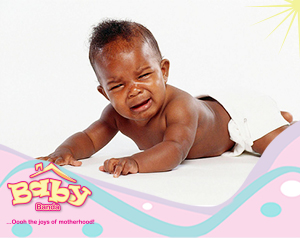Common infant skin conditions are benign and require no treatment. Rashes, birthmarks and yeast infections are very common in infants.
Rash
Your infant’s tender and sensitive skin commonly reacts to his/her new environment. Scattered, pinhead-sized, or somewhat larger pimples surrounded by a mild red zone may appear in some areas of the body when your baby is about 2 days old. These will disappear over time. The cause is unknown, and the rash requires no treatment.
Milia
The whitish, pinhead-size spots, mainly on and around the nose or the newborn’s chin are called milia. Although they appear as tiny pimples, it is important not to disturb or break them, or put acne medicine on them. Doing so could produce a rash or cause the skin to scar. Milia are a normal occurrence in newborns and usually disappear within a few weeks.
Stork bite marks
This is a fanciful term for the areas of pink or red often present in the newborn on the upper eyelids, forehead, and back of the neck. These marks are caused by blood vessels that are close to the surface of the skin. They usually fade by the end of the baby’s second year. These “birthmarks” occur in as many as half of all newborns, especially in those with fair complexions.
Diaper Rash
Typically the rash is red and bumpy and will go away in a few days with warm baths, some diaper cream and letting the little one air dry (spend some time without a diaper) . Most rashes occur because the baby’s skin is sensitive and becomes irritated by the wet or stool diaper. If this seems to recur often, do change the brand of disposable diapers as your baby might be reacting to it.
To prevent or heal diaper rash, try these tips:
• Change your baby’s diaper frequently, and as soon as possible after bowel movements.
• After cleaning the area with mild soap and water or a wipe, and apply a diaper rash or “barrier” cream. Creams with zinc oxide are preferable because they form a barrier against moisture.
• If you use cloth diapers, wash them in dye and fragrance free detergents.
• Let the baby go un-diapered for part of the day. This gives the skin a chance to air out.
• If the diaper rash continues for more than 3 days or seems to be getting worse, call the doctor. It may be caused by a fungal infection that requires a prescription.
• If it keeps recurring, it might be good to change the brand of diapers used and try a different brand.
Thrush and yeast infections
Thrush is a yeast infection in your baby’s mouth. It may appear as white or grayish-white, slightly elevated patches resembling curds of milk on the tongue, roof of the mouth, lips, or throat. These patches cling and will not wipe or rinse off easily. If they are wiped off, they leave the underlying tissue raw and may make it bleed. Other symptoms of thrush may include irritability, poor eating, and a persistent diaper rash. Diaper rash caused by a yeast infection may have red spots along the edges. If you think your baby has thrush or a yeast infection, contact your health provider.
If you are breastfeeding and your baby develops thrush, you may also have a yeast infection on your breasts, which can cause your nipples to crack, itch, or burn. Nipples may also become red, swollen, and painful. Thrush and other yeast infections are treated with medication and/or ointment. Many times, both you and your baby must be treated at the same time.













